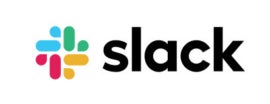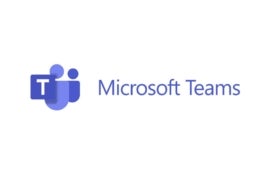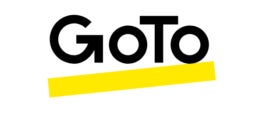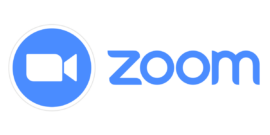
Discover the best screen-sharing software for effective collaboration and remote work. Explore the features, pros, and cons to find the right app for you.
Remote collaboration is a huge asset for teams across the country or globe, but communication breaks down if you can’t share ideas. If you’re presenting in a meeting, learning new software, creating original designs or developing video tutorials, the ability to share your screen and show your work is vital. People need to see what you’re talking about to build context. There are a number of business solutions for screen sharing with special meeting and communication capabilities, and the goal of this list is to explore some of the best software available.
Jump to:
The table below compares the screen sharing software based on other popular features for collaboration and communication.
| Free plan | Recording | Messaging | Whiteboards | Strong learning curve | Pricing | |
|---|---|---|---|---|---|---|
| Slack | Yes | Limited | Yes | No | No | $7.25 user/month |
| Google Meet | Yes | Yes | Yes | Yes | No | $6 user/month |
| Microsoft Teams | Yes | Yes | Yes | Yes | Somewhat | $4 user/month |
| Zoho Meeting | Yes | Yes | Yes | Yes | Yes | $1 host/month for 10 attendees |
| Discord | Yes | No | Yes | No | Yes | $2.99 user/month |
| GoTo Meeting | No | Yes | Yes | Yes | Yes | $12 user/month |
| Zoom | Yes | Yes | Yes | Yes | No | $149.90 user/year |
| Webex | Yes | Yes | Yes | Yes | No | $144 user/year |
Slack is one of the most popular messaging apps for business teams. In Slack, teams can send messages, get notifications, make video clips of their screen or send audio recordings. With Slack huddles, you can start a call in direct message or your workspace channel and talk or screen share. The software offers a customizable workspace for communication and is a great option for large and small organizations.
For more information, read the full Slack review.

One of the most popular virtual meeting tools is Google Meet, a video calling solution part of Google Workspace. You can access it completely free or choose to buy a professional Google Workspace subscription. Teams will be able to host large team meetings from 100 to 1000 participants, make recordings and comments, take polls and access virtual whiteboards.

Microsoft’s offering for fast business communications is Microsoft Teams, a messaging and video calling app. Microsoft Teams comes completely free with a Microsoft account, and you just have to download it. The paid versions require special subscriptions; one is a Microsoft Teams upgrade, and anything higher requires a subscription to Microsoft 365. In Microsoft Teams, you can use group calling, screen share, chat, share files and so much more, depending on the version.
For more information, read more about Microsoft Teams.

The Zoho platform offers many business applications, including a meeting solution called Zoho Meeting. Teams will be able to choose between subscriptions for meetings or webinars. Below, we cover the meeting plans because webinar tiers don’t come with meeting features.
In meeting plans, teams can access a stacked free version or two affordable paid plans under $5 per host/month. You can video call, share screens, chat, poll and collaborate with whiteboards. A meeting can be as long as 24 hours and has the option for 250 members in paid tiers. Pricing is based on the number of participants you need starting at 10.

One great option for virtual communication that’s affordable is Discord. The platform offers the ability to develop communities called servers for anyone you want to invite. On the server, you can make calls where you share your screen, participate in multi-streams and add video backgrounds. Discord also offers a paid plan for more customization, but the free plan is fine for large-group collaboration.

If you’re a small team looking for a feature-rich option dedicated to business meetings then GoTo Meeting is a great choice. They have unlimited meetings with no time limits, as well as collaboration tools and advanced security for data. While it may not double as an option for big events or webinars it has plans to fit teams of 250 participants or less.

One of the biggest platforms for virtual calling is Zoom, and they have quite a few features to offer. You can run large group meetings, take notes and leverage AI to recap meeting topics discussed. The software is very feature-rich and offers advanced reporting and customization on top of regular calling capabilities. Zoom has a great free version, but most of the paid plans offer solutions for more complex needs.

For teams looking for specialized subscriptions for calling, meetings or webinars, Webex is a great virtual option. The platform offers Subscriptions according to your exact needs, with their Meetings subscriptions offering multiple plan tiers. Their plans offer screen sharing, video voicemails, whiteboards, breakout rooms and a lot more.
The best communication software for you will really depend on your exact workflow, but there are helpful criteria to help sort through all the different options. The features below all have huge benefits for teams of all sizes.
Finding a free plan is important for most software decision-making; but with video calling, it’s more important because the software gets very expensive on paid plans. Depending on the actual number of participants or licenses you need, it can be one of the most costly subscriptions for your entire business.
With freemium versions, you can have users with limited access attend meetings without having to buy a $10 to $20 license for 100 people. Many of the free tiers on this list actually allow up to 100 participants, usually for only one hour or less.
Even if a free version isn’t enough to meet your team’s workflow, you can still use it to test the software. The last thing you want is a subscription to software that lags, doesn’t have collaboration features and fails to integrate with preferred software.
Being able to share your screen is great, but also being able to record the meeting for the future is even better. Not all communication applications have the best recording options, but most meeting-focused tools do and even offer them in their free versions.
Recording your meetings is ideal for creating tutorials, referencing back to and making multimedia content. Teams that have a social media presence can post meeting videos and repurpose them for podcasts.
The next best thing to the video call capability is being able to communicate silently during meetings. In-meeting chats help separate changing topics while avoiding interrupting the speaker. Direct messages during the meeting are also super helpful for going over ideas or asking questions without derailing the current conversation.
Many of the tools on this list also offer general chat and direct messaging without having to launch a meeting like Slack, Microsoft Teams and Discord. If your meeting software also doubles as your daily messaging app, then you can save quite a bit of time and money.
A popular way to brainstorm and organize ideas during meetings is through interactive whiteboards. It’s one of the most common collaboration features of meeting software, along with polling and hand raising. Not every screen sharing tool has in-app collaboration, but the ones that do will make it easier to use meetings for important decision-making.
Arguably more important than any feature or price is whether the software has a learning curve that’s too much for your team. All software takes time to learn, but if it takes forever to get your meeting software to work properly, then you lose a lot of time. You will need to push back and reschedule meetings with clients and your team and reschedule your whole week or even month, depending on the damage.
The number one consideration you should have is knowing how your team feels about certain software and what features they need to be productive. If your team wants a casual communication space with topic channels, direct messages and the ability to join calls in a second, then tools like Discord, Slack and Microsoft Teams will work.
For companies that want a meeting software to handle large volumes of participants, Zoom, Google Meet, Microsoft Teams and Webex are great considerations. For medium-sized teams that want feature-rich options, then Goto Meeting and Zoho meetings are perfect for 250-person or less company meetings.
Most of the tools on this list have similar features, the deciding factor is what you can’t go without.
The main factors for the software selected were whether they could screen share, chat and hold meetings. Special features like collaboration and reporting were highlighted to help differentiate capabilities. Usability was also considered, along with how functional their free plans were to get work done.